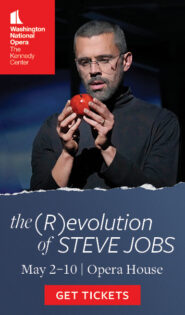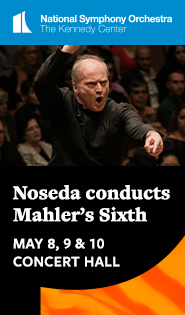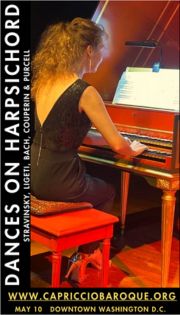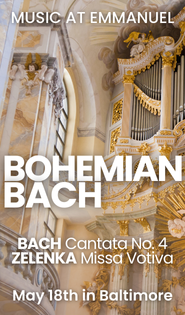Washington National Cathedral opens Holy Week with contrasted requiems
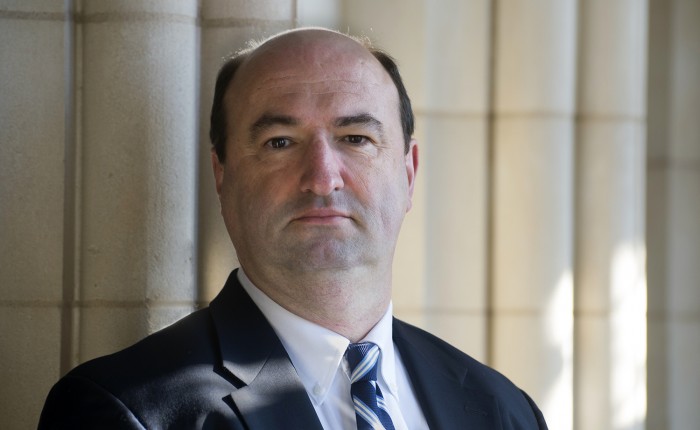
Michael McCarthy conducted Requiems by Mozart and Herbert Howells Sunday at Washington National Cathedral.
The Palm Sunday concert at Washington National Cathedral brought together music from three Christian traditions. As the light faded from the Gothic nave Sunday afternoon, Michael McCarthy led the Washington National Cathedral Choir and Baroque Orchestra in the Requiem by Anglican composer Herbert Howells, selected arias from Bach’s Lutheran cantatas, and Mozart’s setting of the Catholic Requiem Mass.
The Howells piece, a brief collection of anthems to English and Latin texts, provided the highlight. It featured a selection of senior girl choristers of the Washington National Cathedral Choir, and the balance and blending with the adults on the other three parts were optimal. The piece, which is unaccompanied, is both simple and devastatingly effective. Soloists, both adults and young people, sang with clarity and assurance.
The two sections of music setting the Gregorian introit text, “Requiem aeternam,” were marked by lush, carefully tuned harmonies, often simmering with complex dissonance. This was especially true of the conclusion of the service, “I heard a voice from heaven,” where wild, unexpected chord progressions mirror the prophetic text from the Book of Revelation. Much of the credit goes to the careful preparation by conductor Michael McCarthy, who led the Howells piece from a position close to the choir.
McCarthy did not conduct the Bach works performed by the Baroque Orchestra and soloists between the Howells movements, leaving them to the leadership of concertmaster Adriane Post. With Bach’s more complex textures, there were some ensemble misalignments with baritone Richard Giarusso in “Jesus nahm zu sich die Zwölfe” from Bach’s cantata of the same title.
It was hard to assess the relative strengths of the soloists, because their presence in the cavernous space depended on proximity to the two microphones at the front center of the stage. Soprano Laura Choi Stuart seemed strongest, floating gorgeous high notes in “Die Seele ruht in Jesu Händen” from Cantata No. 127, Herr Jesu Christ, wahr’ Mensch und Gott. Although she sounded somewhat swallowed by the acoustic, one could hear the two recorders in this piece, pulsing quarter notes, more clearly.
Oboist Margaret Owens, also standing with the vocal soloists at the front of the stage for these pieces, played with plangent tone, albeit with some intonation issues here and there. As the program ran a little long, it would have made sense to cut one of the arias, perhaps “Es ist vollbracht” from Cantata No. 159, where the low notes stretched Giarusso’s voice.
A mixture of boy and girl choristers formed the soprano part in the WNC Chorus for Mozart’s Requiem, with angelic results on exposed lines (“salva me, fons pietatis”). In many fast choral numbers, starting with the “Kyrie eleison,” the singers rushed ahead of the beat, especially in melismatic passages, leaving the orchestra struggling to catch up in some cases. At the grandest moments, however, like the full chords on the first word of the “Rex tremendae majestatis” movement, the choir sang with resonant authority.
Choi Stuart was equally lovely to hear in the soprano solos here, matched by the stentorian gravitas of Steven Combs on the bass solos. Tenor Matthew Loyal Smith and mezzo-soprano Hannah Hagerty, standing nearer the microphones, were more present. The singing all-around was best in slower numbers, where McCarthy allowed some space to expand, like the sublime “Lacrimosa” for the choir and and the “Recordare” for the soloists.
The orchestra excelled in the Mozart, including a fine trombone solo in the “Tuba mirum” movement. Nina Stern and Ed Matthew, who had played recorder on the first half, did exceptional work here on the gloomy basset horns. Trumpets and timpani added regal highlights in the fuller sections.
The Diderot String Quartet plays Haydn quartets 7:30 p.m. May 16 at Washington National Cathedral. cathedral.org
